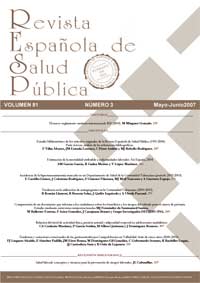Impact in Asturias of primary care emergencies on hospital emergencies for the 1994-2001 period. A time series cointegration analysis
Abstract
Background: Greater accessibility to the primary care continuing care points (CCPs) could reduce the visits to the Hospital Emergency Services (HESs). This study analyses whether Primary Care can replace and Hospital Services in emergencies. Methods: All of the emergency visits (n=6.454.034) made to the HESs and Primary Care CCPs in Asturias and of each one of the healthcare districts within the 1994-2001 period were calculated. The time series were constructed with monthly frequencies for Asturias and each one of the districts, a cointegration analysis having been made to assess whether the two series are inter-replaceable. Results: A mean annual increase of the total number of emergencies in Asturias of 6.2% (CCP: 7,8%; HES: 5.1%) was found, with different growth among the healthcare districts. In the time series cointegration analysis, no replaceability was found between the primary care and hospital emergencies for Asturias and for the healthcare districts, except for the healthcare district of Oviedo, where a 10% growth rate in primary would lower hospital emergencies by 2.7%. Conclusions: The greater accessibility to the Primary Care CCPs increases the use thereof without reducing the visits to the HESs. Therefore, the increase in Primary Care resources does not seem to be an effective alternative for reducing the visits to the HESs.Downloads
Published
2008-03-14
Issue
Section
ORIGINALS

